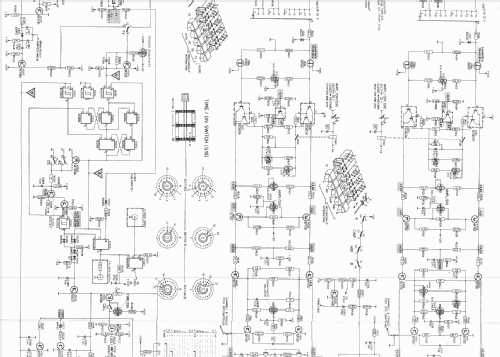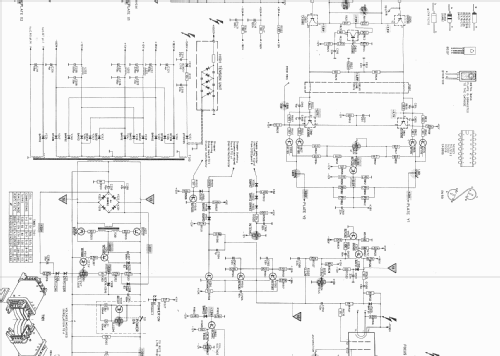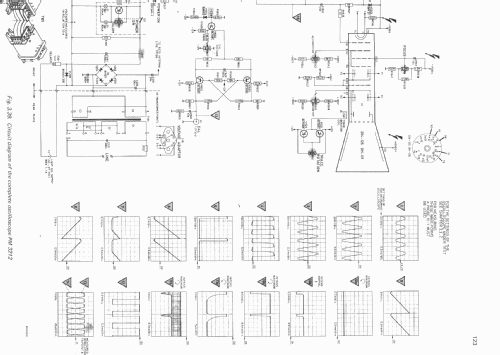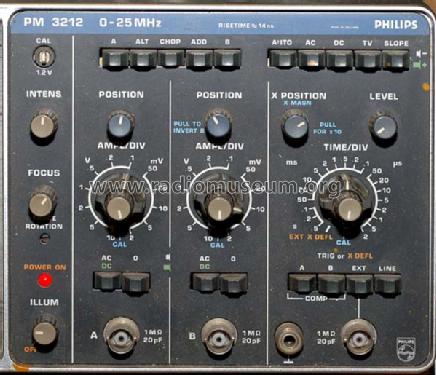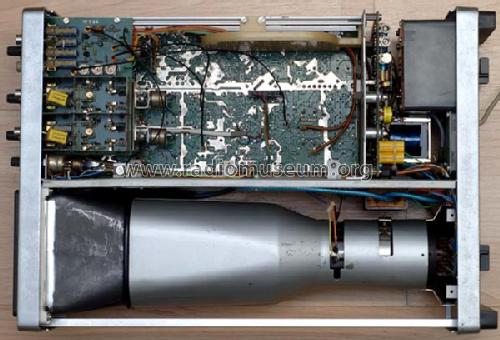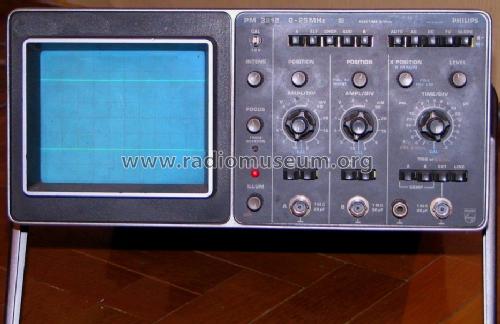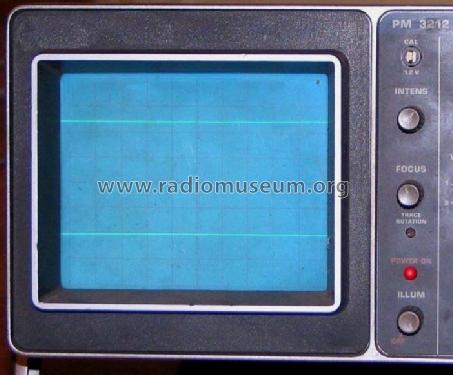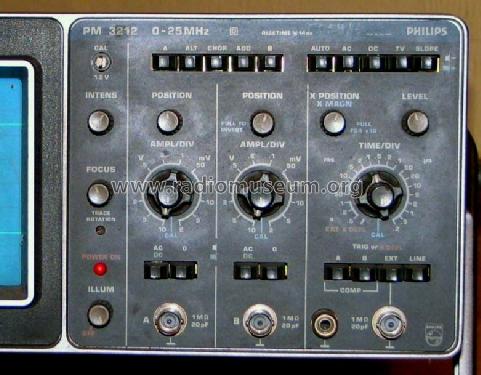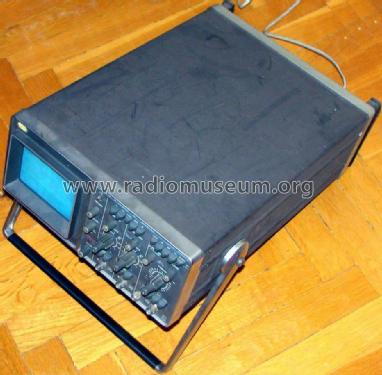Zweikanal-Oszilloskop PM3212
Philips; Eindhoven (tubes international!); Miniwatt
- Paese
- Olanda
- Produttore / Marca
- Philips; Eindhoven (tubes international!); Miniwatt
- Anno
- 1977
- Categoria
- Strumento da laboratorio
- Radiomuseum.org ID
- 94547
Clicca sulla miniatura dello schema per richiederlo come documento gratuito.
- Numero di tubi
- 1
- Valvole
- D14-125GH/08
- Numero di transistor
- A semiconduttori.
- Semiconduttori
- Gamme d'onda
- - senza
- Tensioni di funzionamento
- Alimentazione a corrente alternata (CA) / 110, 127, 220, 240 Volt
- Materiali
- Mobile di metallo
- Radiomuseum.org
- Modello: Zweikanal-Oszilloskop PM3212 - Philips; Eindhoven tubes
- Forma
- Soprammobile con qualsiasi forma (non saputo).
- Dimensioni (LxAxP)
- 300 x 137 x 445 mm / 11.8 x 5.4 x 17.5 inch
- Annotazioni
- 25 MHz Zweikanal-Oszilloskop
- Peso netto
- 7.9 kg / 17 lb 6.4 oz (17.401 lb)
- Fonte dei dati
- - - Data from my own collection
- Letteratura / Schemi (1)
- -- Original-techn. papers.
- Letteratura / Schemi (2)
- "International Electronics" April 1978 (Werbung)
- Autore
- Modello inviato da Michael Münch. Utilizzare "Proponi modifica" per inviare ulteriori dati.
- Altri modelli
-
In questo link sono elencati 5280 modelli, di cui 4428 con immagini e 3461 con schemi.
Elenco delle radio e altri apparecchi della Philips; Eindhoven (tubes international!); Miniwatt
Collezioni
Il modello Zweikanal-Oszilloskop fa parte delle collezioni dei seguenti membri.
Discussioni nel forum su questo modello: Philips; Eindhoven: Zweikanal-Oszilloskop PM3212
Argomenti: 1 | Articoli: 10
Guten Abend,
ich besitze seit bestimmt 15 Jahren das oben genannte Philips-Oszilloskop. Erst seit einiger Zeit habe ich damit ein eigenartiges Problem: die Gehäuselackierung wird klebrig!
Bei der Lackierung handelt es sich um eine matt-rauhe Oberfläche, die am ehesten dem nahekommt, was in einem Beitrag von Herrn Renz als Runzel- oder Kräusellack bezeichnet wird, hier aber mit einer sehr feinen Struktur.
Die Oberfläche fühlt sich klebrig an, zieht auch Schmutz an - Staubteile lassen sich nicht mehr abwischen - allerdings ohne dass sich Farbpartikel lösen würden. Selbst fest aufgeriebenes Klebeband nimmt beim Abreißen keine Partikel mit.
Was tun?
ich besitze seit bestimmt 15 Jahren das oben genannte Philips-Oszilloskop. Erst seit einiger Zeit habe ich damit ein eigenartiges Problem: die Gehäuselackierung wird klebrig!
Bei der Lackierung handelt es sich um eine matt-rauhe Oberfläche, die am ehesten dem nahekommt, was in einem Beitrag von Herrn Renz als Runzel- oder Kräusellack bezeichnet wird, hier aber mit einer sehr feinen Struktur.
Die Oberfläche fühlt sich klebrig an, zieht auch Schmutz an - Staubteile lassen sich nicht mehr abwischen - allerdings ohne dass sich Farbpartikel lösen würden. Selbst fest aufgeriebenes Klebeband nimmt beim Abreißen keine Partikel mit.
Was tun?
Michael Münch, 09.Apr.06

